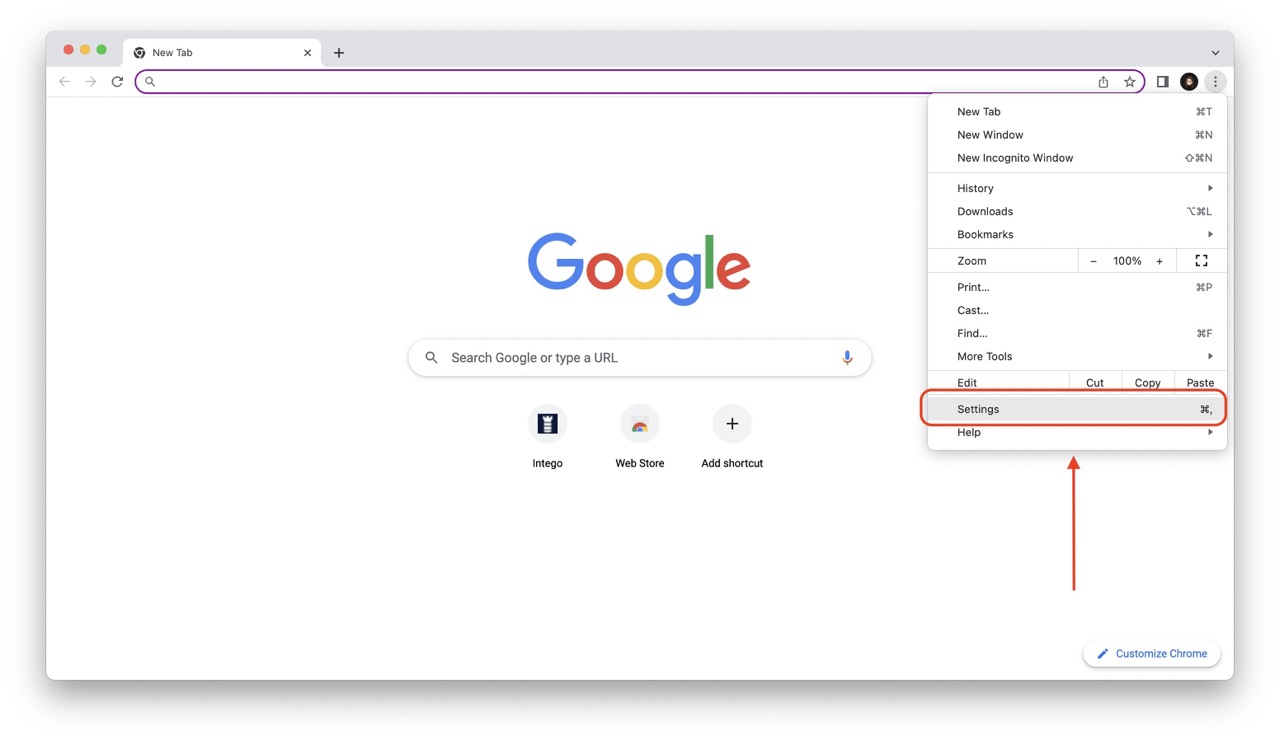Introduction
Google Chrome is a popular web browser known for its speed, simplicity, and user-friendly interface. However, over time, you may encounter issues such as slow performance, unresponsive tabs, or unexpected changes in your browser settings. When faced with these challenges, resetting Google Chrome settings can often provide a quick and effective solution to restore the browser to its default state.
Resetting Chrome settings can help resolve various issues, including browser crashes, frequent error messages, or unwanted changes caused by malicious extensions or software. It's important to note that resetting Chrome settings does not delete your bookmarks, history, or saved passwords. Instead, it reverts the browser to its original configuration, eliminating any problematic changes that may be affecting its performance.
In this guide, we will walk you through the step-by-step process of resetting Google Chrome settings. Whether you're experiencing browser-related issues or simply want to start afresh with a clean slate, understanding how to reset Chrome settings can be a valuable skill for optimizing your browsing experience. So, let's dive in and explore the simple yet powerful steps to reset Google Chrome settings effectively.
Step 1: Open Google Chrome Settings
To begin the process of resetting Google Chrome settings, you first need to access the browser's settings menu. This can be accomplished through a few simple steps, as outlined below:
-
Launch Google Chrome: Open the Google Chrome browser on your computer by clicking on its icon in the taskbar, desktop, or applications folder. Once the browser is open, you will see the familiar interface with the address bar, tabs, and navigation controls.
-
Access the Settings Menu: In the top-right corner of the browser window, you will find the three vertical dots arranged in a vertical line. This is the "Customize and control Google Chrome" menu. Click on these dots to open a dropdown menu.
-
Navigate to Settings: From the dropdown menu, locate and click on the "Settings" option. This will redirect you to the Chrome Settings page, where you can customize various aspects of the browser, including privacy and security settings, appearance, and advanced configurations.
-
Alternatively: You can also access the Settings menu by typing "chrome://settings/" in the address bar and pressing Enter. This direct URL will take you to the Chrome Settings page without the need to navigate through the dropdown menu.
Upon reaching the Settings page, you are now ready to proceed with the next steps to reset Google Chrome settings, which will be covered in the following sections.
By following these straightforward steps, you can easily access the Chrome Settings menu, setting the stage for the subsequent actions required to reset the browser's configurations and address any issues you may be experiencing.
Step 2: Reset Chrome Settings
Once you have accessed the Chrome Settings page, the next crucial step is to initiate the process of resetting the browser's settings. Resetting Chrome settings can help resolve a wide range of issues, including performance slowdowns, unresponsive tabs, and unexpected changes in browser behavior. Here's how you can effectively reset Chrome settings:
Resetting Chrome Settings:
-
Scroll to the Bottom: Upon reaching the Chrome Settings page, scroll down to the bottom to access the "Advanced" option. Click on it to reveal additional settings and configurations.
-
Locate Reset and Clean Up Section: Within the Advanced settings, locate the "Reset and clean up" section. This section contains the option to reset Chrome settings, providing a streamlined approach to resolving various browser-related issues.
-
Click on Restore Settings to Their Original Defaults: Under the "Reset and clean up" section, you will find the "Restore settings to their original defaults" option. Click on this to proceed with the reset process.
-
Review the Reset Options: Upon clicking the "Restore settings to their original defaults" option, a dialog box will appear, presenting you with the reset options. This dialog box provides a summary of the settings that will be reset, including default search engine, homepage, new tab page, and pinned tabs. It's important to review these details to understand the impact of the reset process.
-
Initiate the Reset: After reviewing the reset options, you can proceed by clicking the "Reset settings" button. This action will prompt Chrome to reset the selected settings to their original defaults, effectively addressing any underlying issues that may have been affecting the browser's performance.
Additional Considerations:
-
Extensions and Customizations: It's important to note that resetting Chrome settings will not remove your installed extensions or customizations. However, it will revert browser-specific settings to their default configurations, potentially resolving issues caused by conflicting settings or unwanted changes.
-
Impact on Browsing Data: Resetting Chrome settings does not delete your browsing history, bookmarks, or saved passwords. These essential data remain intact, ensuring that your personalized browsing experience is preserved while addressing browser-related issues.
By following these steps, you can effectively reset Chrome settings, providing a streamlined solution to address performance issues and unexpected changes in browser behavior. This proactive approach can help optimize your browsing experience, ensuring that Chrome operates smoothly and efficiently.
Now that you have successfully reset Chrome settings, the next step involves confirming the reset to finalize the process and restore the browser to its default state. This critical step will be covered in the following section, allowing you to complete the reset process with confidence and clarity.
Step 3: Confirm Reset
After initiating the reset of Google Chrome settings, it is essential to confirm the reset to finalize the process and restore the browser to its default state. This critical step ensures that any underlying issues or unwanted changes are effectively addressed, allowing you to proceed with a clean and optimized browsing environment. Here's how you can confirm the reset of Chrome settings:
Confirming the Reset:
-
Review the Reset Summary: Upon clicking the "Reset settings" button in the previous step, a confirmation dialog box will appear, summarizing the settings that will be reset to their original defaults. This summary provides a clear overview of the changes that will take place, including the default search engine, homepage, new tab page, and pinned tabs. Take a moment to review this summary to ensure that you are aware of the specific settings being reset.
-
Acknowledge the Impact: It's important to acknowledge the impact of the reset process on your browsing experience. While the reset primarily focuses on reverting browser-specific settings to their default configurations, it does not delete your browsing history, bookmarks, or saved passwords. By acknowledging this impact, you can proceed with confidence, knowing that your essential browsing data remains intact.
-
Click on "Reset Settings": Once you have reviewed the reset summary and acknowledged its impact, you can proceed by clicking the "Reset settings" button within the confirmation dialog box. This action confirms your decision to reset Chrome settings, prompting the browser to implement the necessary changes and restore its default configurations.
Finalizing the Reset:
-
Wait for the Process to Complete: Upon confirming the reset, Google Chrome will initiate the process of reverting the selected settings to their original defaults. It's important to allow the browser sufficient time to complete this process, ensuring that the reset is executed thoroughly and effectively.
-
Restart Google Chrome: After the reset process is completed, it is recommended to restart Google Chrome to apply the changes. Closing and reopening the browser allows the restored settings to take effect, providing you with a fresh and optimized browsing environment.
By following these steps to confirm the reset of Google Chrome settings, you can finalize the process with clarity and assurance, knowing that any underlying issues or unwanted changes have been effectively addressed. This proactive approach ensures that your browsing experience is optimized, allowing you to enjoy the speed, simplicity, and reliability that Google Chrome is known for.
Conclusion
In conclusion, understanding how to reset Google Chrome settings is a valuable skill that empowers users to address various browser-related issues effectively. By following the simple yet powerful steps outlined in this guide, you can navigate the Chrome Settings menu, initiate the reset process, and confirm the reset to restore the browser to its default state.
Resetting Chrome settings serves as a proactive solution to common issues such as slow performance, unresponsive tabs, and unexpected changes in browser behavior. By reverting the browser to its original configurations, you can eliminate problematic changes caused by conflicting settings, unwanted software installations, or malicious extensions. This streamlined approach helps optimize your browsing experience, ensuring that Google Chrome operates smoothly and efficiently.
It's important to note that resetting Chrome settings does not delete your essential browsing data, including bookmarks, history, and saved passwords. Instead, it focuses on restoring browser-specific settings to their default configurations while preserving your personalized browsing experience. This means that you can address performance issues and unwanted changes without compromising your essential data, providing a balanced approach to browser maintenance and optimization.
By acknowledging the impact of the reset process and confirming the reset with clarity and assurance, you can finalize the process with confidence, knowing that any underlying issues have been effectively addressed. The ability to navigate the Chrome Settings menu, initiate the reset process, and confirm the reset empowers you to take control of your browsing experience, ensuring that Google Chrome remains a reliable and user-friendly platform for accessing the web.
In essence, the process of resetting Google Chrome settings exemplifies the proactive approach that users can take to maintain a smooth and optimized browsing environment. By leveraging the built-in capabilities of the browser, you can address performance issues, unexpected changes, and unwanted configurations, allowing you to enjoy the speed, simplicity, and reliability that Google Chrome is known for.
In conclusion, mastering the art of resetting Chrome settings equips you with a valuable skill that enhances your browsing experience, ensuring that Google Chrome remains a trusted companion for accessing the web with speed, security, and convenience.

























